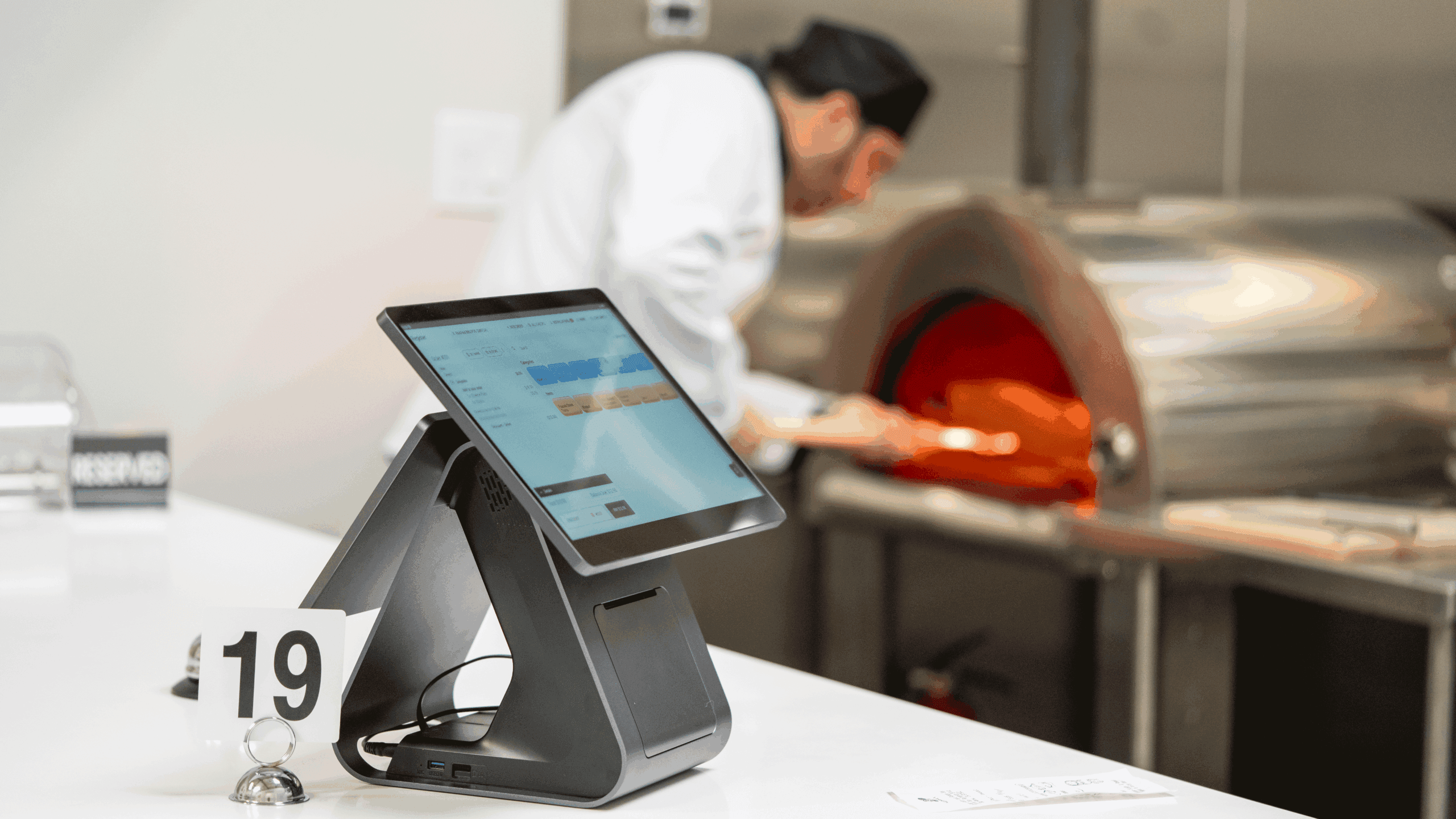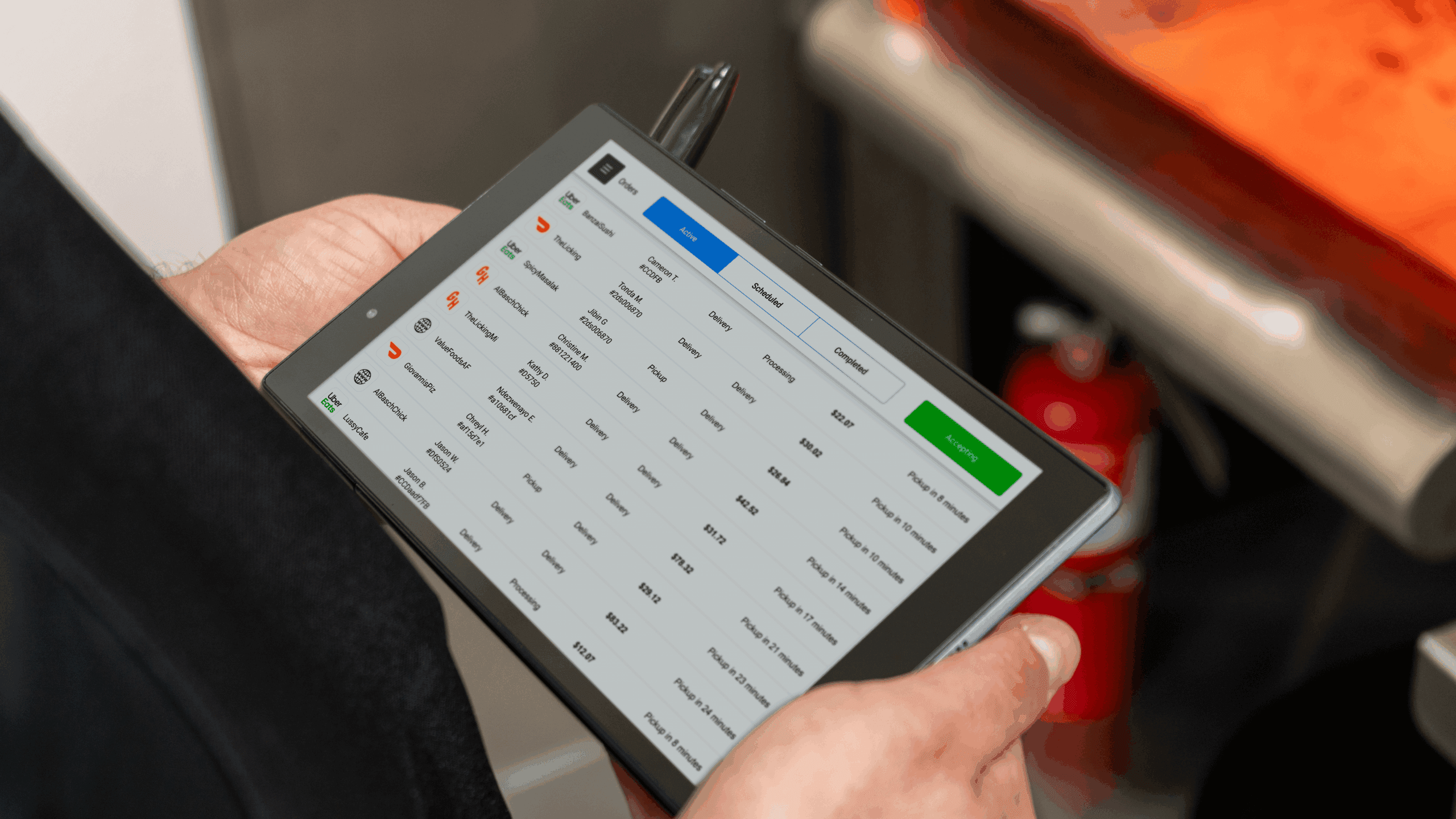- The Diversity of Italian Wines
- Red Wines: A Journey Through Bold Flavors
- White Wines: The Elegance of Italian Whites
- Exploring the World of Italian Sparkling Rosé
- Guidelines for Pairing Italian Wines with Specific Dishes
- Suggestions for Creating a Harmonious Dining Experience
- Tips for Selecting a Diverse Range of Wines
- Savvy Wine Pairings and Solutions by Orders.co
Crafting the perfect wine list for an Italian restaurant is an art as rich and diverse as the country itself.
From the robust reds of Chianti to the elegant whites of Veneto, each bottle tells a story of tradition, passion, and the timeless allure of Italian winemaking.
Let’s explore the nuances of flavor, terroir, and the relationship of your independent restaurant food menu with Italian wines that will create an unforgettable experience.
The Diversity of Italian Wines
A deep understanding of critical Italian wine regions and grape varieties empowers Italian restaurant owners to create authentic, diverse, and customer-centric wine lists.
Overview of Italian Wine Regions
Italy, a country synonymous with culinary mastery, boasts a mosaic of diverse wine regions, each with its own distinctive terroir and grape varieties.
Explore the landscapes and flavors from key regions that form the backbone of Italy’s winemaking heritage:
Tuscany: Nestled in the heart of Italy, Tuscany is home to renowned wines such as Chianti, Brunello di Montalcino, and Vino Nobile di Montepulciano. The rolling hills adorned with vineyards create a picturesque setting for wines known for their robust character and expressions of Sangiovese.
Piedmont: In the northwestern corner of the country, Piedmont is celebrated for its noble reds, Barolo and Barbaresco, crafted from the Nebbiolo grape. This region, framed by the Alps, offers wines with complex flavors and a structure that matures gracefully over time.
Veneto: The northeastern region of Veneto is famous for producing Prosecco, a sparkling wine that has become a global sensation. Additionally, wines like Soave and Amarone showcase the versatility and excellence of the region’s white and red offerings.
Sicily: Italy’s largest island, Sicily, is a treasure trove of indigenous grape varieties. From the bold and robust Nero d’Avola to the aromatic and crisp Grillo, Sicilian wines capture the essence of the Mediterranean.
Red Wines: A Journey Through Bold Flavors

Italy’s red wines are celebrated globally for their bold flavors, rich history, and unparalleled diversity.
Chianti
- Main Features: Originating from Tuscany, Chianti wines are primarily made from Sangiovese grapes. They exhibit vibrant acidity, cherry undertones, and a touch of Tuscan terroir.
- Differentiation: Chianti Classico and Riserva showcase additional layers and complexities due to extended aging.
- Choosing for Your Listing: Ideal for those seeking a classic Tuscan experience. Versatile with a range of Italian dishes, especially pasta and grilled meats.
Barolo
- Main Features: Hailing from Piedmont, Barolo is crafted from the Nebbiolo grape. Known as the “King of Wines,” it boasts bold tannins, intricate layers of dark fruit, and the potential for cellar aging.
- Differentiation: Distinctive for its robust structure and the unique terroir of the Langhe region.
- Choosing for Your Listing: Appeals to wine connoisseurs seeking a regal and full-bodied red. Pair with hearty dishes and rich, flavorful sauces.
Amarone della Valpolicella
- Main Features: Amarone is made from the Veneto region using dried Corvina, Rondinella, and Molinara grapes. It showcases a rich, full-bodied profile with flavors of dried fruit and a hint of sweetness.
- Differentiation: The appassimento process of drying grapes before fermentation contributes to its unique character. Appassimento method involves drying grapes before fermentation, concentrating their flavors and sugars
- Choosing for Your Listing: Ideal for those who appreciate bold reds with a touch of sweetness. Pairs wonderfully with aged cheeses and hearty meats.
Brunello di Montalcino
- Main Features: Produced exclusively in the Montalcino region, Brunello is crafted from Sangiovese Grosso grapes. It offers a full-bodied, robust profile with notes of dark cherry, leather, and spice.
- Differentiation: Aged for an extended period, Brunello gains complexity and elegance.
- Choosing for Your Listing: Suited for patrons seeking a refined and well-aged Italian red. Perfect with game meats and hearty pasta dishes.
Aglianico del Vulture
- Main Features: Hailing from Basilicata, Aglianico wines, especially those from Vulture, showcase intense flavors of black fruit, firm tannins, and pronounced earthiness.
- Differentiation: Known for its structure and aging potential, akin to the characteristics of Nebbiolo.
- Choosing for Your Listing: Appeals to those who enjoy robust, full-bodied reds. Pair with grilled meats and hearty Italian stews.
White Wines: The Elegance of Italian Whites

Italy, often celebrated for its reds, also boasts an array of white wines that captivate the palate with their freshness, aromatic complexity, and versatility.
Pinot Grigio
- Main Features: Hailing from Veneto, Pinot Grigio is renowned for its crisp acidity, citrusy notes, and hints of green apple and pear. It offers a refreshing profile, making it an ideal choice for aperitifs and seafood pairings.
- Differentiation: Pinot Grigio stands out for its clean and neutral profile, setting it apart from more aromatic white wines.
- Choosing for Your Listing: Perfect for patrons seeking a light and refreshing white wine. Pair with light salads, seafood pasta, and dishes benefiting from a touch of acidity.
Vermentino
- Main Features: Originating from coastal regions, Vermentino is aromatic with a bouquet featuring floral and citrus notes. It often reflects the terroir of its maritime vineyards.
- Differentiation: Known for its aromatic complexity and the ability to express the coastal influences in its flavor profile.
- Choosing for Your Listing: Appeals to those who appreciate aromatic whites. Ideal with seafood, Mediterranean cuisine, and light appetizers.
Gavi (Made from Cortese Grape)
- Main Features: Gavi, crafted from the Cortese grape in Piedmont, is elegant with a light-to-medium body, crisp acidity, and nuanced palate featuring green apple, lime, and a subtle almond finish.
- Differentiation: Stands out for its finesse and ability to offer complexity while maintaining delicacy.
- Choosing for Your Listing: Suited for patrons seeking refined white wine. Versatile with light appetizers, seafood, and poultry dishes.
Exploring the World of Italian Sparkling Rosé
Extend the celebration by exploring the enchanting world of Italian sparkling rosé, where effervescence meets the delicate hues of pink, creating a festive and elegant experience.
Prosecco
- Main Features: Hailing from the Veneto region, Prosecco is celebrated for its effervescence, light, and fruity profile, with notes of green apple, pear, and a touch of sweetness.
- Differentiation: Recognized for its versatility, Prosecco can be found in various styles, including brut, extra dry, and dry.
- Choosing for Your Listing: Perfect for those seeking a lively and approachable sparkling wine. Ideal as an aperitif or paired with lighter dishes.
Franciacorta
- Main Features: Crafted in the Lombardy region using traditional methods, Franciacorta offers a more complex and refined sparkling wine experience. It often features fine bubbles, a creamy texture, and notes of citrus and almond.
- Differentiation: Distinct for its high-quality production, including extended aging on lees, providing depth and complexity.
- Choosing for Your Listing: Suited for patrons seeking premium sparkling wine. Excellent for celebrations or pairing with elegant dishes.
Lambrusco
- Main Features: Originating from Emilia-Romagna, Lambrusco is a sparkling red wine known for its lively bubbles, vibrant acidity, and fruity profile, often with dark berry notes.
- Differentiation: It stands out as a sparkling red wine, offering a unique alternative to traditional whites.
- Choosing for Your Listing: Appeals to those looking for something different. Pairs well with charcuterie, pizza, and flavorful Italian dishes.
Guidelines for Pairing Italian Wines with Specific Dishes
Navigate Italian cuisine with these guidelines for pairing wines with specific dishes, ensuring a fusion of flavors that captivates the senses.
Red Wines
Chianti
- Dish Example: Tuscan Braised Beef with Chianti Reduction
- Why It Works: The vibrant acidity and cherry undertones of Chianti complement the richness of braised beef, creating a harmonious balance of flavors.
Barolo and Barbaresco
- Dish Example: Truffle Risotto with Barolo-Infused Mushrooms
- Why It Works: The bold tannins and complex flavors of Barolo or Barbaresco stand up to the earthiness of truffles, creating a luxurious and indulgent pairing.
2. White Wines
Pinot Grigio
- Dish Example: Lemon Herb Grilled Sea Bass with Pinot Grigio Beurre Blanc
- Why It Works: Pinot Grigio’s crisp acidity and citrusy notes refine the freshness of the sea bass, while the beurre blanc adds a touch of richness.
Gavi:
- Dish Example: Pesto Chicken Caprese Salad with Gavi Vinaigrette
- Why It Works: Gavi’s delicate balance of acidity and floral notes complements the vibrant flavors of pesto, making this a refreshing and light pairing.
3. Sparkling Wines
Prosecco
- Dish Example: Prosciutto-Wrapped Melon Crostini
- Why It Works: Prosecco’s effervescence and fruity profile cut through the saltiness of the prosciutto and improve the sweetness of the melon, creating a delightful contrast.
Franciacorta
- Dish Example: Lobster Risotto with Saffron and Franciacorta Cream Sauce
- Why It Works: The creamy texture of Franciacorta complements the richness of lobster, while the fine bubbles add a luxurious touch to the dish.
Lambrusco
- Dish Example: Balsamic Glazed Pork Tenderloin with Lambrusco Reduction
- Why It Works: Lambrusco’s fruity and slightly sweet profile balances the savory notes of pork and refines the caramelization of the balsamic glaze.
Tips for Creating Harmonious Pairings
Match Intensity: Lighter dishes with lighter wines and heartier dishes with fuller-bodied wines.
Consider Sauces: Pair wines with the sauce. For example, a creamy dish may pair well with a fuller-bodied white or sparkling wine.
Balance Flavors: Seek a balance of flavors. The wine should enhance, not overpower, the dish.
Experiment and Explore: Encourage patrons to explore different pairings based on personal preferences. Offer wine flights to allow for a tasting journey.
Suggestions for Creating a Harmonious Dining Experience
Besides choosing the right wines, the customer dining experience plays a crucial role in getting repeat visits and recommendations.
Thus, ensure that the ambiance and overall atmosphere complement the chosen wines and dishes.
Here’s how:
- Atmosphere and Ambiance
Create an atmosphere that mirrors the spirit of the chosen wines. For instance, a candlelit dinner with a rich Barolo may evoke a romantic ambiance, while a vibrant Prosecco could create a lively and social setting.
- Temperature Considerations
Emphasize the importance of serving wines at the appropriate temperatures. Learn how the temperature of the wine can impact its expression and how it interacts with the flavors of the food. Provide guidelines for serving reds slightly below room temperature, whites, and sparkling wines well-chilled.
- Educating the Staff
Educate staff on the art of wine and food pairing. A knowledgeable staff can guide customers through the menu, offering personalized recommendations that improve the overall dining experience.
Tips for Selecting a Diverse Range of Wines
- Explore Indigenous Varieties
In addition to classics like Sangiovese and Nebbiolo, consider introducing wines crafted from lesser-known indigenous varieties. For instance, Aglianico from Campania or Lagrein from Alto Adige can offer unique and authentic wine-tasting experiences.
- Consider Different Styles and Profiles
Complement your selection of bold reds with a variety of white wines. Include a crisp and mineral Vermentino from Sardinia, a rich and buttery Fiano from Campania, and an aromatic Arneis from Piedmont to cater to diverse preferences.
- Include New Releases and Trends
Stay updated with emerging trends by featuring wines from up-and-coming winemakers or those experimenting with innovative winemaking techniques. For instance, a natural or orange wine could add a contemporary touch to your list.
- Offer Wines for Various Occasions
Include a range of wines suitable for different occasions. For casual evenings, offer a versatile Dolcetto. For celebratory moments, showcase a prestigious Amarone della Valpolicella or a Brunello di Montalcino for those seeking a more refined experience.
- Consider Aging Potential
Introduce wines with varying aging potential. Alongside ready-to-drink selections like a fresh and lively Barbera, offer age-worthy options such as a Sagrantino di Montefalco that can be cellared for several years.
- Diversify Price Points
Ensure a broad price range by featuring a well-priced Nero d’Avola for budget-conscious patrons and a Barbaresco Riserva for those looking to indulge in a premium experience.
Balancing Regional Representation on the Wine List
Highlight Iconic Regions
Feature wines from iconic regions but go beyond the well-known. Alongside Chianti, introduce a Vino Nobile di Montepulciano from Tuscany to showcase the diversity within the region.
Explore Emerging Regions
Extend your regional representation by including wines from emerging regions. For example, introduce wines from Basilicata, such as Aglianico del Vulture, to provide a taste of the region’s unique terroir.
Rotate Regional Features
Keep your wine list dynamic by periodically rotating regional features. Showcase the wines of Friuli-Venezia Giulia for a few months, then shift the spotlight to the wines of Marche, offering a constantly evolving experience.
Consider Regional Pairing Themes
Create thematic pairings to highlight regional diversity. For a Venetian theme, pair Amarone della Valpolicella with a dish featuring polenta and a hearty game, improving the regional connection for your patrons.
Considering Budget-Friendly Options and Premium Selections
Establish a Diverse Pricing Structure
Cater to various budgets by featuring a well-priced Soave Classico for everyday enjoyment and a prestigious Super Tuscan for those seeking a premium experience.
Highlight Value-for-Money Options
Showcase a Montepulciano d’Abruzzo that offers exceptional quality at an affordable price, providing patrons with a wallet-friendly yet delightful option.
Offer Wine Flights
Introduce wine flights, allowing patrons to explore premium selections without committing to a full bottle. For example, offer a flight featuring different vintages of Barolo, allowing guests to appreciate the nuances of aging.
Promote Special Occasion Bottles
Encourage patrons to indulge in premium selections for special occasions. Highlight a Bolgheri Sassicaia or a Barbaresco Riserva as ideal choices for celebrating milestones or creating memorable dining experiences.
Use Your Website to Showcase the Best Features of Your Wines
E-commerce revenue is expected to increase by 53% from 2023 to 2027.
Hence, a professional restaurant website is essential for customers’ swift ordering experience.
Here’s how you can facilitate their decisions and improve their online experience:
Professional Imagery and Descriptions
Boost the online shopping experience by providing detailed descriptions and professional images. For a Barolo, describe its aging potential, mention the notes of cherry and truffle, and include a photo of the picturesque vineyards.
Interactive Wine Pairing Video Experience
Consider creating a short and engaging interactive wine-pairing video for your patrons:
- Start by introducing three featured Italian wines – a Chianti Classico, a Pinot Grigio, and a Prosecco. Then, let viewers choose their preferred wine, leading them to specific segments showcasing each option.
- Highlight the unique characteristics of each wine, and then present a virtual menu featuring three iconic Italian dishes. Allow viewers to click on the dish they find most appealing.
- Transition to a segment where a chef or sommelier recommends pairings based on the chosen wine and dish.
- Encourage viewers to taste along by taking sips of their chosen wine while enjoying the recommended dish.
- Prompt viewers to share their experiences in real time through comments or social media. Later, conclude with an interactive recap, summarizing key takeaways, and invite viewers to explore more pairings on your website or visit the restaurant.
Wine Stories and Backgrounds
Share captivating stories about your wines on the website. Provide insights into the winemaker’s philosophy or the unique vineyard practices behind a Sagrantino, creating a connection between patrons and their chosen wines.
User-Friendly Navigation
Ensure a user-friendly website interface. Implement filters for wine types, regions, and price ranges, allowing patrons to easily navigate and find the information they need for an informed and enjoyable online shopping experience.
Online Exclusive Offers
Create exclusive online offers, such as discounts on mixed cases or limited-time promotions on premium selections. This drives online sales and adds an element of excitement for patrons exploring your wines virtually.
Savvy Wine Pairings and Solutions by Orders.co
With a curated wine list that celebrates diversity, regional richness, and inclusivity in pricing, you’re poised to offer a memorable and immersive dining experience.
To integrate these strategies and kickstart your Italian restaurant’s success, consider leveraging the comprehensive solutions provided by Orders.co.
From effective marketing solutions that boost your restaurant’s visibility to implementing local SEO strategies that draw in local patrons, Orders.co has the tools to propel your establishment to new heights.
Moreover, with a professional online ordering platform, Orders.co empowers you to meet the evolving demands of the modern dining landscape.
Here’s to a successful venture filled with delightful pairings, satisfied patrons, and the steadfast support of Orders.co, ensuring your Italian restaurant stands out in the vibrant culinary industry!



